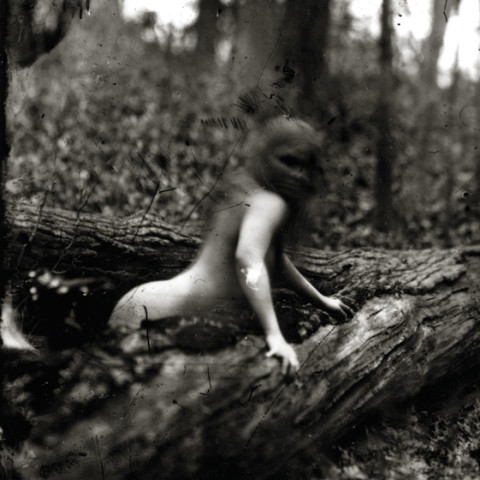Photography of witches at play and at ritual

There has long been a tension between the witch of legend and the modern day practitioner. The former has its origins mainly in polemical christian ideas and folktales, where the witch is a consort of the devil, brewing wicked and foul smelling potions in a cast-iron pot, and eating children.
This image of the witch -- crooked nosed hag she is -- has not been completely wiped from the popular imagination, but certainly the modern day witch movement has gone a long way to challenge these often sexist views. The rise of the Wiccan movement in the 1960s took its lessons not from the Malleus Maleficarum, but from the writings of people like Gerald Gardner and Alex Sanders. Their vision of the witch is rooted in tales of cunning folk and (sometimes) faulty anthropology regarding the existence of pre-christian horned deity cults whose practices remained hidden, but very much alive, through the centuries. It is, of course, important that the modern Wiccan movement has elevated the image of the witch, but unfortunately a New Age character has settled in, and in so doing removed some of the mystery from a form of worship that was once practiced in quiet groves and amongst ancient megaliths. The two surviving pictures -- the storybook crone and the nature-worshiping hippie -- are both unsatisfying.
Like most things, it takes an artful eye to realize an idea that has weight, that can evoke a sense of other-worldliness, of magic. Of witchcraft. Fulgur Press, one of the most important publishers of limited edition occult and related volumes, has recently released Earth Magic by Rik Garrett, a collection of photographs of, well, witches. These are neither claw-fingered nor filk-playing neo-pagans. Garrett’s photos are studies of private moments of worship. They are erotic, but not pornographic, mysterious but not contrived, haunting but not exploitive. These are photographs of witches at play and at ritual. The photos themselves have no explanation. There are no captions or any other corresponding material (except for an illuminating introduction by Pam Grossman). The only other element is a sigil on the facing page of each image, a kind of seal or brand that only heighten the sense of strangeness. There is no denying it. Garrett’s photos are spooky. My only hesitation is that maybe these photos reveal what should have remained hidden. Thankfully Garrett’s eye is that of someone who knows they don’t belong. The photos appear to be taken furtively, shakily, with a sense of trepidation and humble awe.

No comments:
Post a Comment